Description of the variety Magical Moonlight
Video review of paniculate hydrangea Magical Moonlight:
Among the representatives of the luxurious paniculate hydrangea, the variety Magical Moonlight (translated as “Magic Moonlight”) occupies a special place. The shrub is characterized by abundant flowering, huge cone-shaped inflorescences, and unusual flower color. Every gardener dreams of getting such beauty, especially since the variety is unpretentious and shows high frost resistance.
Description of the hydrangea variety Magical Moonlight
The bush is collected, tall, erect with a fan-shaped crown. The shoots are thick, dark brown, heavily leafy, growing vertically upward. The leaf blades are elongated, oval-shaped, rich green in color, carved along the edges. By the end of October the leaves become bright yellow.
The inflorescences are dense, very large, and consist mainly of sterile flowers. Fertile buds are present in small quantities. When blooming, the inflorescences have a round shape; as they grow, they stretch out, taking on a pyramidal, sharp-conical shape with a wide base. The flowers are large, four-petaled, the aroma is barely noticeable.
Advantages and disadvantages of the variety
The Magical Moonlight variety has a number of advantages over its relatives:
- The bush does not fall apart if the skeleton is formed correctly in the fall and the shoots are cut short.
- The plant increases its decorative value when grown on a trunk.
- Even after pruning to zero, new shoots grow quickly.
- Retains white color with lime splashes, does not turn pink with the onset of autumn.
- When fully dissolved, the crown of the inflorescence remains light green in color.
- Flowering is abundant. At the height of the season, the bush is buried in a snow-white cloud of inflorescences.
The variety also has disadvantages, but they are few:
- The shoots, although powerful, are not flexible and brittle. They are afraid of strong winds. Without carefully processing the tree trunk circle, you can easily break the stem.
- The branches need to be tied up; they do not hold large inflorescences after heavy rains and break.
- Flowers rot after rain, burn and turn brown in the bright sun.
|
At the initial stage of flowering, lime panicles |
Planting and caring for Magical Moonlight hydrangeas
There are clear rules that guide when planting hydrangeas. By adhering to them, over time you will get a healthy ornamental shrub, delighting with the beauty of flowering.
Selecting a location
The variety is placed in partial shade, in a place protected from direct sunlight, strong winds, and drafts. Hydrangea grows well in acidic, loose, well-drained soil.
For information! The color of the inflorescences depends on the place of growth. When grown in a shaded area, the flowers will be greenish-cream throughout the flowering period.
Landing dates
It is preferable to plant in spring.When planting in the fall, there is a possibility that the plant will not be able to prepare for winter.
For better survival, the plant is planted either early in the morning or in the evening.
Video about the rules for planting paniculate hydrangeas:
Technology of planting seedlings
Before the procedure, the seedling is watered. It is better to soak in a bucket of water for 6 hours, adding the root formation stimulator “Kornevin” (10 grams per 10 liters of water).
- Dig a planting hole, focusing on the volume of the root system. When planting a potted seedling, the planting depth should be at the same level as in the container. For a small sprout there is no point in digging a large, deep hole.
- A layer of drainage (expanded clay, pine cones) is placed at the bottom.
- The substrate for filling the pit directly depends on the quality of the soil on the site. If the soil is heavy, mix equal parts: garden soil, sand, acidic peat, humus. Superphosphate (50 g) and potassium sulfate (40 g) are added to the mixture.
If the soil on the site is light, moisture-permeable and breathable (sandy, sandy loam), leavening agents in the form of vermiculite and sand are not added.
|
Spring planting hydrangeas |
- The hole is half filled with prepared soil and watered.
- Place the plant in the center of the hole, lightly press down to remove air from the roots, and water generously.
- Mulch the tree trunk circle with bark, peat, and pine needles. The seedling is shaded for 2 weeks.
- After 7-10 days, water with a solution containing any growth stimulator.
Aftercare for Magical Moonlight
Caring for planted hydrangeas will not be difficult. A well-groomed beauty will not hesitate to show its decorative qualities and will envelop you in a long wave of stunning flowering.
|
When fully dissolved, the top of the hydrangea remains green |
Don't forget to read:
Propagation of hydrangeas by cuttings and layering at home ⇒
Watering
The Magical Moonlight variety does not forgive lack of watering; soil moisture is kept under constant control. The procedure is carried out in the morning or evening strictly at the root. Flowers and leaves are not moistened; this will negatively affect the decorative appearance of the bush.
Every 7-10 days, an adult plant needs 2-3 buckets of water, a young seedling needs half as much. During drought, watering is carried out more often, 2 times a week. During prolonged rains, do not irrigate, otherwise the development of rot can be provoked.
For information! In the heat, Magical Moonlight wilts greatly, but after irrigation it quickly recovers.
|
Watering a hydrangea seedling |
Top dressing
The Magical Moonlight variety requires good nutrition. Fertilizing is carried out according to the following plan (grams are indicated per 1 m2):
- in early spring, urea (20-30 g), superphosphate (35-40 g), sulfuric potassium (30-35 g) are added over the snow;
- during the formation of inflorescences, superphosphate (65-80 g), potassium sulfate (40-45 g) are given;
- in early autumn, superphosphate is added in the same proportion, and the tree trunk circle is mulched with compost.
Video about the rules for pruning paniculate hydrangeas:
Pruning hydrangea
To obtain large inflorescences, short spring pruning is necessary; the more radical it is, the more magnificent the flowering will be.
In the fall, they form a skeleton and cut out all the small things. Only 5-7 of the strongest shoots are left, the rest are removed, otherwise the bush will fall apart.
|
Short spring pruning |
Don't forget to read:
Read more about methods of pruning paniculate hydrangeas here ⇒
Frost resistance and preparation for winter
Paniculata hydrangea is winter-hardy, and the Magical Moonlight variety is no exception; it can withstand cold temperatures down to -34°C.In central Russia and in regions with more severe climates, it winters persistently without shelter.
To preserve the health of the hydrangea and the possibility of its flowering next year, the bush is prepared for the coming cold weather:
- Remove faded inflorescences so that the shoots do not break under the weight of snow.
- Apply a thick layer (5-7 cm) of fertilizer - humus or compost.
- Water abundantly (at least 3 buckets per plant).
- Mulch with a layer of tree bark.
To be on the safe side, in case of a frosty, snowless winter, some gardeners still cover their beauty. Use a standard or frame method of shelter:
- With the standard method, the shoots are bent to the ground, agrofibre or a wooden box is laid on them, and covered with spruce branches on top.
|
Standard method of covering hydrangeas for the winter |
- The frame method involves constructing a frame half a meter around the plant. The structure is made 10-15 cm above the hydrangea, the space is filled with dry leaves. Used to protect mature bushes, as they are difficult to bend to the ground.
|
Frame method of shelter |
Reviews of hydrangea Magical Moonlight
The impression of the variety is formed according to the reviews of the owners, who, over several years of cultivation, managed to study the positive and negative aspects of Magical Moonlight:
“Magical Moonlight has a larger flower, a larger brush and very interesting color shifts from white to green.”
“M. Moonlight has very large inflorescences, up to 45-50 cm. And, as it were... with cheeks. They are heavy and even without rain they tend to the ground. And the shoots are fragile, which is why I tie them to supports before flowering, because last year I wanted to lift the drooping inflorescences, and the shoot remained in my hand, separately from the bush.”
Three simple ways to propagate hydrangeas from cuttings:
Using hydrangea in landscape design
Thanks to its gorgeous flowering, Magical Moonlight is often used in landscape design to decorate summer cottages and recreation areas. Masters of garden design use culture as:
|
Hydrangea hedge Magical Moonlight |
Don't forget to read:
Growing paniculate hydrangeas on a trunk with your own hands ⇒
|
Solo, free-standing plant |
.
|
A bright accent in plantings with hostas and low-growing conifers |
Don't forget to read:
|
Hydrangea Magical Moonlight occupies the central part of a complex flower bed composition |
Other articles about hydrangea varieties:
- Characteristics and description of the Magic Candle hydrangea with photos and reviews from gardeners ⇒
- Hydrangea paniculata Polistar: description, photos and reviews ⇒
- Characteristics and description of Samara Lydia hydrangea with photos and reviews ⇒
- Paniculata hydrangea Summer love: variety description, reviews and photos ⇒
- Mojito: variety description, photos, gardener reviews ⇒
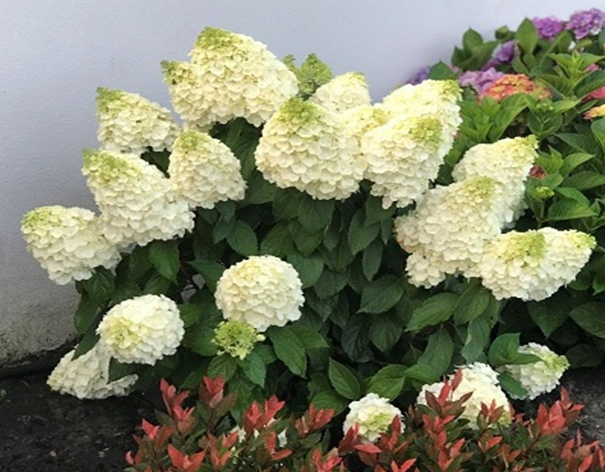
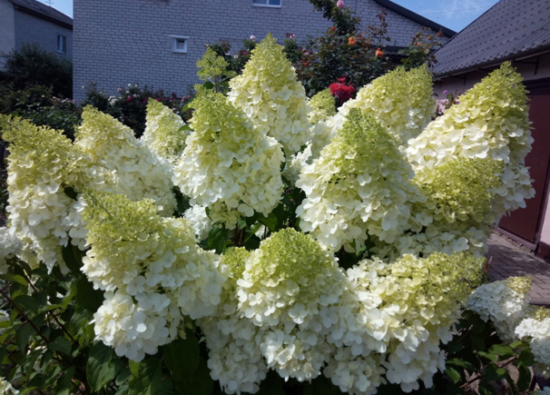
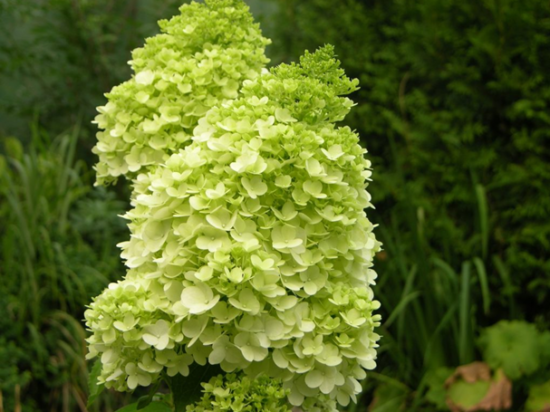
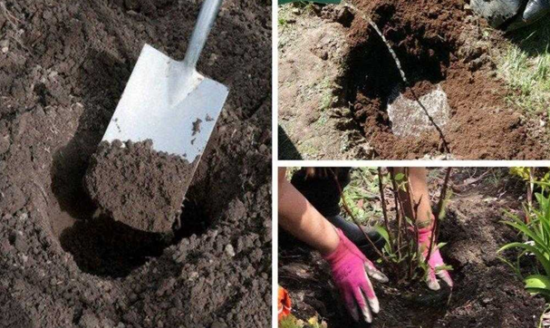

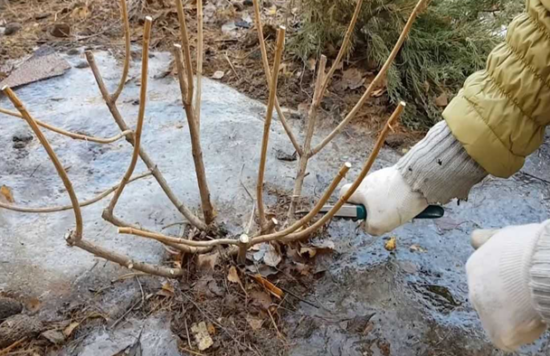
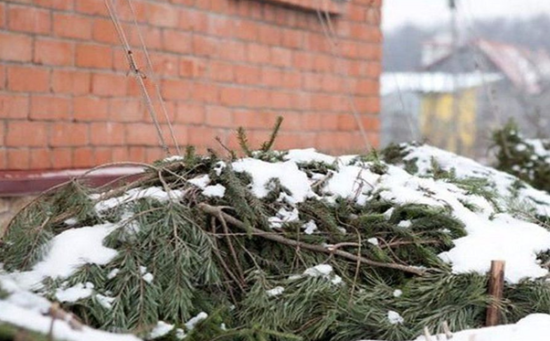
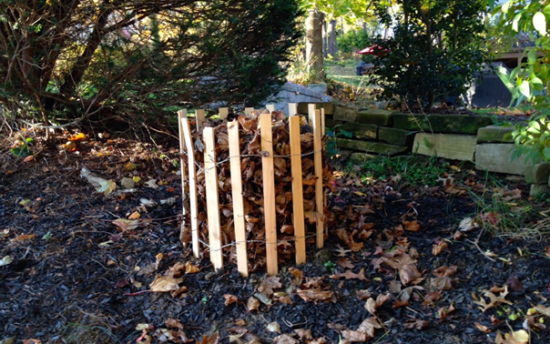

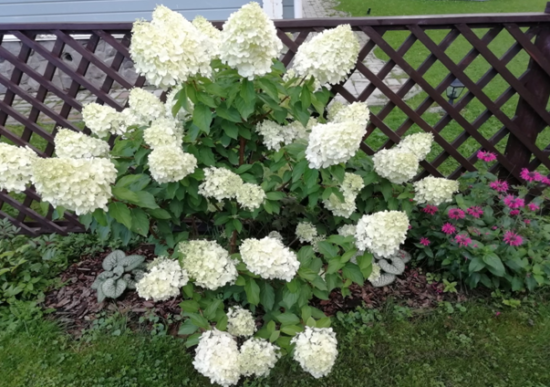
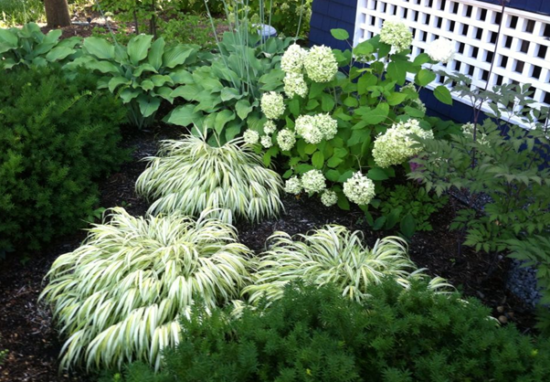


 CUCUMBERS NEVER GET SICK, I'VE BEEN USING ONLY THIS FOR 40 YEARS! I SHARE A SECRET WITH YOU, CUCUMBERS ARE LIKE THE PICTURE!
CUCUMBERS NEVER GET SICK, I'VE BEEN USING ONLY THIS FOR 40 YEARS! I SHARE A SECRET WITH YOU, CUCUMBERS ARE LIKE THE PICTURE! You can dig a bucket of potatoes from each bush. Do you think these are fairy tales? Watch the video
You can dig a bucket of potatoes from each bush. Do you think these are fairy tales? Watch the video
 How our fellow gardeners work in Korea. There is a lot to learn and just fun to watch.
How our fellow gardeners work in Korea. There is a lot to learn and just fun to watch. Eye trainer. The author claims that with daily viewing, vision is restored. They don't charge money for views.
Eye trainer. The author claims that with daily viewing, vision is restored. They don't charge money for views. A 3-ingredient cake recipe in 30 minutes is better than Napoleon. Simple and very tasty.
A 3-ingredient cake recipe in 30 minutes is better than Napoleon. Simple and very tasty. Therapeutic exercises for cervical osteochondrosis. A complete set of exercises.
Therapeutic exercises for cervical osteochondrosis. A complete set of exercises. Which indoor plants match your zodiac sign?
Which indoor plants match your zodiac sign? What about them? Excursion to German dachas.
What about them? Excursion to German dachas.